1-Naphthylacetyl chloride
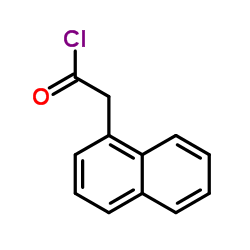
1-Naphthylacetyl chloride structure
|
Common Name | 1-Naphthylacetyl chloride | ||
|---|---|---|---|---|
| CAS Number | 5121-00-6 | Molecular Weight | 204.652 | |
| Density | 1.2±0.1 g/cm3 | Boiling Point | 333.7±21.0 °C at 760 mmHg | |
| Molecular Formula | C12H9ClO | Melting Point | N/A | |
| MSDS | USA | Flash Point | 156.4±15.2 °C | |
| Name | 2-naphthalen-1-ylacetyl chloride |
|---|---|
| Synonym | More Synonyms |
| Density | 1.2±0.1 g/cm3 |
|---|---|
| Boiling Point | 333.7±21.0 °C at 760 mmHg |
| Molecular Formula | C12H9ClO |
| Molecular Weight | 204.652 |
| Flash Point | 156.4±15.2 °C |
| Exact Mass | 204.034195 |
| PSA | 17.07000 |
| LogP | 3.46 |
| Vapour Pressure | 0.0±0.7 mmHg at 25°C |
| Index of Refraction | 1.628 |
Synonym:2-(1-Naphtyl)acetyl chlorid Section 2 - COMPOSITION, INFORMATION ON INGREDIENTS
Risk Phrases: 34 Section 3 - HAZARDS IDENTIFICATION EMERGENCY OVERVIEW
Causes burns.Moisture sensitive. Potential Health Effects Eye: Causes eye burns. Skin: Causes skin burns. Ingestion: Causes gastrointestinal tract burns. Inhalation: Causes chemical burns to the respiratory tract. Chronic: Not available. Section 4 - FIRST AID MEASURES Eyes: Immediately flush eyes with plenty of water for at least 15 minutes, occasionally lifting the upper and lower eyelids. Get medical aid immediately. Skin: Get medical aid immediately. Immediately flush skin with plenty of water for at least 15 minutes while removing contaminated clothing and shoes. Ingestion: Do not induce vomiting. Get medical aid immediately. Inhalation: Get medical aid immediately. Remove from exposure and move to fresh air immediately. If not breathing, give artificial respiration. If breathing is difficult, give oxygen. Notes to Physician: Treat symptomatically and supportively. Section 5 - FIRE FIGHTING MEASURES General Information: As in any fire, wear a self-contained breathing apparatus in pressure-demand, MSHA/NIOSH (approved or equivalent), and full protective gear. Extinguishing Media: Use foam, dry chemical, or carbon dioxide. Section 6 - ACCIDENTAL RELEASE MEASURES General Information: Use proper personal protective equipment as indicated in Section 8. Spills/Leaks: Absorb spill with inert material (e.g. vermiculite, sand or earth), then place in suitable container. Section 7 - HANDLING and STORAGE Handling: Do not breathe dust, vapor, mist, or gas. Do not get in eyes, on skin, or on clothing. Use only in a chemical fume hood. Storage: Store in a cool, dry place. Store in a tightly closed container. Corrosives area. Store under an inert atmosphere. Section 8 - EXPOSURE CONTROLS, PERSONAL PROTECTION Engineering Controls: Facilities storing or utilizing this material should be equipped with an eyewash facility and a safety shower. Use adequate ventilation to keep airborne concentrations low. Exposure Limits CAS# 5121-00-6: Personal Protective Equipment Eyes: Not available. Skin: Wear appropriate protective gloves to prevent skin exposure. Clothing: Wear appropriate protective clothing to prevent skin exposure. Respirators: Follow the OSHA respirator regulations found in 29 CFR 1910.134 or European Standard EN 149. Use a NIOSH/MSHA or European Standard EN 149 approved respirator if exposure limits are exceeded or if irritation or other symptoms are experienced. Section 9 - PHYSICAL AND CHEMICAL PROPERTIES Physical State: Viscous liquid Color: yellow Odor: Not available. pH: Not available. Vapor Pressure: Not available. Viscosity: Not available. Boiling Point: 130 deg C @0.6mmHg Freezing/Melting Point: Not available. Autoignition Temperature: Not available. Flash Point: Not available. Explosion Limits, lower: Not available. Explosion Limits, upper: Not available. Decomposition Temperature: Solubility in water: Specific Gravity/Density: Molecular Formula: C12H9ClO Molecular Weight: 205 Section 10 - STABILITY AND REACTIVITY Chemical Stability: Not available. Conditions to Avoid: Incompatible materials, exposure to moist air or water. Incompatibilities with Other Materials: Strong oxidizing agents, alcohols. Hazardous Decomposition Products: Hydrogen chloride, chlorine, carbon monoxide, carbon dioxide, acrid smoke and fumes. Hazardous Polymerization: Has not been reported Section 11 - TOXICOLOGICAL INFORMATION RTECS#: CAS# 5121-00-6 unlisted. LD50/LC50: Not available. Carcinogenicity: 2-(1-Naphthyl)ethanoyl chloride - Not listed by ACGIH, IARC, or NTP. Section 12 - ECOLOGICAL INFORMATION Section 13 - DISPOSAL CONSIDERATIONS Dispose of in a manner consistent with federal, state, and local regulations. Section 14 - TRANSPORT INFORMATION IATA Shipping Name: CORROSIVE LIQUID, ACIDIC, ORGANIC, N.O.S.* Hazard Class: 8 UN Number: 3265 Packing Group: III IMO Shipping Name: CORROSIVE LIQUID, ACIDIC, ORGANIC, N.O.S. Hazard Class: 8 UN Number: 3265 Packing Group: III RID/ADR Shipping Name: CORROSIVE LIQUID, ACIDIC, ORGANIC, N.O.S. Hazard Class: 8 UN Number: 3265 Packing group: III Section 15 - REGULATORY INFORMATION European/International Regulations European Labeling in Accordance with EC Directives Hazard Symbols: C Risk Phrases: R 34 Causes burns. Safety Phrases: S 26 In case of contact with eyes, rinse immediately with plenty of water and seek medical advice. S 36/37/39 Wear suitable protective clothing, gloves and eye/face protection. S 45 In case of accident or if you feel unwell, seek medical advice immediately (show the label where possible). WGK (Water Danger/Protection) CAS# 5121-00-6: No information available. Canada None of the chemicals in this product are listed on the DSL/NDSL list. CAS# 5121-00-6 is not listed on Canada's Ingredient Disclosure List. US FEDERAL TSCA CAS# 5121-00-6 is not listed on the TSCA inventory. It is for research and development use only. SECTION 16 - ADDITIONAL INFORMATION N/A |
| Hazard Codes | C |
|---|---|
| Risk Phrases | R34 |
| Safety Phrases | S26-S36-S37-S39 |
| RIDADR | UN 3265 |
| Packaging Group | II |
|
~99% 
1-Naphthylacety... CAS#:5121-00-6 |
| Literature: Chen, Yin-Bo; Li, Ji-Ling; Shao, Xu-Sheng; Xu, Xiao-Yong; Li, Zhong Chinese Chemical Letters, 2013 , vol. 24, # 8 p. 673 - 676 |
|
~% 
1-Naphthylacety... CAS#:5121-00-6 |
| Literature: Knobelsdorf, James; Hays, Sheryl; Stankovic, Charles J.; Para, Kimberly S.; Connolly, Michael K.; Galatsis, Paul; Harter, William; Shahripour, Aurash B.; Plummer, Mark Stephen; Lunney, Beth; Janssen, Bernd; Fell, Jay Bradford Patent: US2003/96826 A1, 2003 ; |
|
~% 
1-Naphthylacety... CAS#:5121-00-6 |
| Literature: I.G. Farbenind. Patent: DE562391 , 1929 ; Fortschr. Teerfarbenfabr. Verw. Industriezweige, vol. 19, p. 779,781 |
| Precursor 4 | |
|---|---|
| DownStream 10 | |
| 1-Naphthaleneacetyl chloride |
| 1-naphthylacetic acid chloride |
| 2-(naphthalen-1-yl)acetyl chloride |
| 1-naphthalenylacetyl chloride |
| 1-Naphthylacetyl chloride |
| 1-Naphthaleneacetylchloride |
| (naphth-1-yl)acetyl chloride |
| MFCD00175852 |
| naphthylacetyl chloride |
| 2-(1-Naphthyl)Ethanoyl Chloride |


![1-[1]naphthyl-butan-2-ol structure](https://image.chemsrc.com/caspic/192/179396-33-9.png)
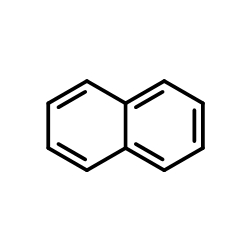
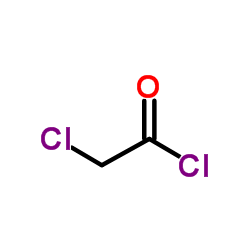
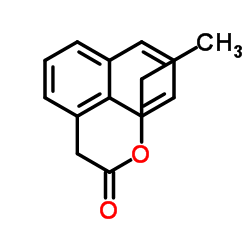 CAS#:2122-70-5
CAS#:2122-70-5 CAS#:189057-82-7
CAS#:189057-82-7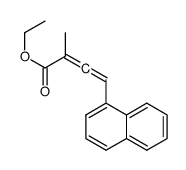 CAS#:189625-96-5
CAS#:189625-96-5 CAS#:86-86-2
CAS#:86-86-2 CAS#:2235-15-6
CAS#:2235-15-6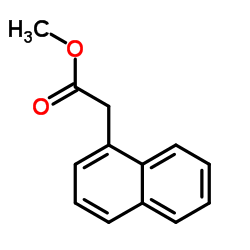 CAS#:2876-78-0
CAS#:2876-78-0 CAS#:773-99-9
CAS#:773-99-9 CAS#:5415-58-7
CAS#:5415-58-7![2-[(1-NAPHTHYLACETYL)AMINO]BENZOIC ACID structure](https://image.chemsrc.com/caspic/022/101895-37-8.png) CAS#:101895-37-8
CAS#:101895-37-8 CAS#:102613-45-6
CAS#:102613-45-6